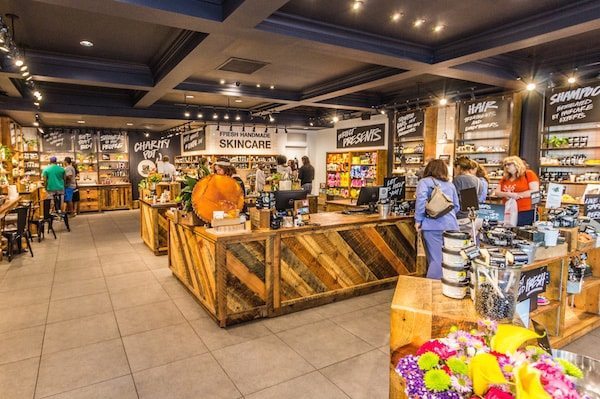Being told you need to change something fundamental about your product can feel somewhat akin to Ross from Friends yelling at you while you are helping him move a heavy couch up a narrow stairway. And yet, there are times when you really do need to pivot.
Many traditional food and beverage companies have been slow to respond to changing consumer preferences around food innovation, clean ingredients and transparency, loosing market share and profits in the process. They are trying to make up for this lack of action by rapidly acquiring or incubating new brands. In essence, they are trying to pivot to a portfolio of products that aren’t just about price or convenience.
Mary Pelletteri with Top Note Tonics shared on our podcast about how she originally thought she was going to start a beer company since she had a lengthy career in beer operations, including at Goose Island and Miller/Coors. But, she and her team decided not to because the beer category was already very crowded. That led her into mixers (a growing sub-category of beverages), and it took experimenting with different types of products (like syrups) before landing on ready-to-drink sparkling tonics as Top Note Tonics’ key business opportunity. She and Top Note pivoted in response to where the market and the consumer was headed.
Like anything in food and beverage businesses, decisions to pivot or change should based on your target consumer’s preferences, your product category’s growth (or decline) and other general market trends. If you put your customer and their preferences in the driver’s seat in this way, you can ensure decisions about when and where to pivot will be guided by where the key business opportunity lies, and not other things.
And now, our roundup of the best food and beverage finance news, events and resources from around the web…
Business Model Insights
- Does Your Startup Have a Spending Strategy? (Harvard Business Review) – “Starting a new business involves a host of challenges, and chief among them is knowing what to spend your money on—and how much to spend. You have to consider salaries, marketing budget, office size, technology services, and on and on. These spending choices require tradeoffs, so entrepreneurs must first develop a strategy for allocating limited resources across a wide range of available options. Too often, assumptions about the potential market and its clients can cloud our judgement about expenses.”
- Switching to Healthy Ingredients Is Riskier For Brands Than You Might Think (AdWeek)
- How to grow plant-based product sales (New Hope Media)

Raising Capital
- 5 things to know before trying to secure a line of credit (New Hope Media) – “Expansion takes capital, and most businesses will need to borrow or raise equity to finance these expenditures. There are a variety of lenders in the market today that offer an array of financing options. With all these options available to consumer packaged goods companies, there are strategies these companies should consider when seeking a loan: Know your lender’s all-in annual percentage rate (including fees and charges); read the loan document carefully; shop around; don’t wait until the last minute to seek financing; and ask for references.”
- Saffron Road CEO Talks Financing Mission (Project Nosh)
- How to Fund Your Business Startup: 5 Fast and Popular Options (Small Business Administration Blog)
CPG/National Brands
- How to design a successful in-store promotional program (Smart Brief) – “Both grocers and manufacturers can benefit from in-store promotional programs, which offer fresh exposure to brands. Shoppers can see new or existing products as they’re already on the hunt for groceries, making the opportunity ripe for purchases. Promotional campaigns can be presented in a variety of formats, including sampling events, demonstrations, displays, endcaps, price cuts, BOGO offers and many more. After running an in-store promotion, always calculate the return on investment to ensure that the money spent was earned back via purchases. Once a company has a baseline of performance, it can more strategically project how to reinvest its marketing dollars rather than stabbing in the dark at trying to lower prices to bring in consumers.”
- 9 steps to set up a top-notch category management strategy (New Hope Media)
- Glossary of Wholesale Terminology (Shelf Life)

Market Trends
- Big Food has been missing something big: Shifting consumer preferences (FoodDive) – “With increasing pressure to show earnings growth, founders-driven Top 10 companies like Coca Cola and General Mills have been going through changes. We seem to be in the eye of a Category 5 storm of transformation for big food companies. Many CEOs are transitioning as their corporations come out of a decade of consolidation — a decade during which they focused on building their brands in ways that appealed to shareholders and retailers, while also concentrating on building suppliers’ power over buyers. In all this, they missed the signs of the burgeoning consumer interest in food innovation, and therefore missed the mark with consumers.”
- Retail forecast: What will grocery shopping look like in 2018? (USA Today)
- Beverages Stand Out Among 2017’s Top 10 Packaged Grocery Categories (Convenience Store News)
Farming and AgTech
- Grower or Tech Company? Indoor Farmers Must Make Up Their Minds (AgFunder News) – “If they continue down their current path, the future competition in the industry will consist of brands of indoor produce growers competing against each other based on (among other things) who has developed the best technology and horticultural know-how in-house. This obviously puts a huge strain on any ambition of profitability as the company must earn back not only the cap-ex of the construction of the system but also of the immense (and continued) R&D investments that preceded and follow it. With limited margins, we argue that that is not a realistic expectation. If we compare with the more mature greenhouse growing industry, the future is likely to have technology providers on the one hand and growers on the other.”
- As Trump Appeals to Farmers, Some of His Policies Don’t (New York Times)
- As Consumer Demands Shift, Wisconsin Ag Experts Encourage Innovation (Wisconsin Public Radio)

Deals/M&A
- New Investors Flock To Food (CB Insights) – “Attracted by big exits, corporate activity, and new brands, the number of investors backing food & beverage startups has tripled since 2013, jumping to over 450 investors making bets in the space last year. This includes a wide range of investors, including venture capital funds, private equity firms, corporations, and angel investors.”
- Money Talks: The Top Five Beverage Deals of 2017 (BevNet)
- Agtech Exits: 2017 Activity Generates Cautious Optimism for 2018 (AgFunder News)
Industry Events
- Expo West Pitch Slam Application Due (Natural Products Expo West) – $ (attending Expo West), 1/27, online
- Chobani Incubator Application Due (Chobani) – Free to apply, 1/30, online
- WI Governor’s Business Plan Contest (State of WI) – Free to apply, 1/31, online
- Food and Agriculture Program (Village Capital) – Free, 2/2, online
- Creating a Food Safety Culture (Wisconsin Manufacturing Extension Partnership) – Free, 2/14, online
- Moses Organic Farming Conference (MOSES) – $, 2/22 – 2/24 in La Crosse, WI
- Expo West (New Hope Network) – $, 3/8 – 3/11 in Anaheim, CA
- Good Food Expo (FamilyFarmed) – $, 3/24 – 3/25 in Chicago, IL
- National Good Food Network Conference (Wallace Center) – $, 3/27 – 3/30 in Albuquerque, NM
- Fearless Farm Finances Workshop (MOSES) – $, 4/27 in Wisconsin Dells, WI





